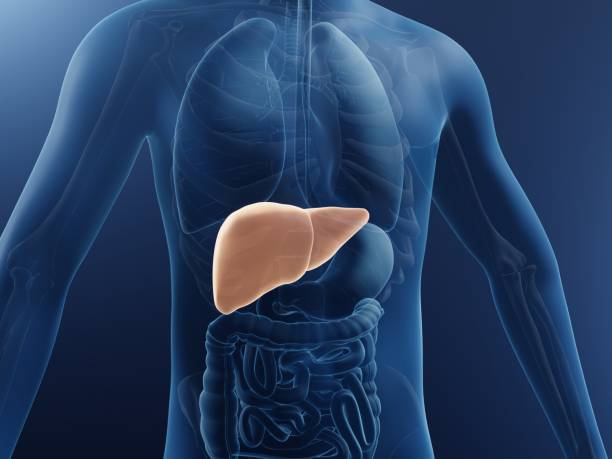
Non-alcoholic fatty liver disease (NAFLD) denotes a range of liver conditions that affect people who drink little to no alcohol. Too much fat stored in liver cells is the major characteristic of NAFLD.
NAFLD is common around the world and especially more in the Western nations.
Some individuals who are affected with NAFLD are likely to develop non-alcoholic steatohepatitis (NASH), which is an aggressive form of fatty liver disease. NASH is marked by liver inflammation and can progress to advanced scarring (cirrhosis) and liver failure. This damage caused by NASH is similar to the damage from heavy alcohol use.
The percentage of prevalence of NAFLD in the male and female populations is 18.3% and 22.9% respectively.
Symptoms
There are usually no signs and symptoms caused by Non-Alcoholic Fatty Liver Disease and when it does, it may include:
- Fatigue
- Pain or discomfort in the upper right abdomen
- Indigestion
- Belching
- Continuous hiccups
Causes
Experts are still researching to know why some people accumulate fat in the liver while others do not. Also, there is a limited understanding of the reason why some fatty livers develop inflammation that leads to cirrhosis.
Some of the underlying causes for NAFLD are linked to the following conditions:
- Overweight or obesity
- Insulin resistance
- High blood sugar
- High levels of fats, particularly triglycerides, in the blood
These health problems promote the deposit of fat in the liver and this excess fat acts as a toxin to liver cells, causing liver inflammation, which can also lead to a build-up of scar tissue in the liver.
Risk factors
- The risk of getting NAFLD is linked to a having a wide range of diseases and conditions such as:
- High Cholesterol
- High Triglycerides in the blood
- Create Metabolic syndrome
- Cause Obesity, particularly when fat is concentrated in the abdomen
- Polycystic ovary syndrome
- Sleep apnea
- Type 2 diabetes
- Underactive thyroid (hypothyroidism)
- Underactive pituitary gland (hypopituitarism)
Complications
The main complication of Non- Alcoholic Fatty Liver Disease (NAFLD) is cirrhosis, which is late-stage scarring in the liver. And as the liver tries to halt inflammation, it results in areas of scarring (fibrosis). This continued inflammation leads to the spread of fibrosis in more and more liver tissue.
If this process isn't interrupted, cirrhosis can cause:
•Fluid build-up in the abdomen (ascites)
•Swelling of veins in the esophagus which can rupture and bleed
•Confusion, drowsiness, and slurred speech
•Liver cancer
•End-stage liver failure
Diagnosis
Since in most cases NAFLD causes no symptoms, it only comes to medical attention when tests are done for other reasons that point to a liver problem. If your liver looks unusual on ultrasound or if you have an abnormal liver enzyme test, it can be indicative of NAFLD.
Tests done to identify, confirm, and determine disease severity include:
Blood Tests
Complete blood count
•Liver enzyme and liver function tests
•Tests for chronic viral hepatitis (hepatitis A, hepatitis C, and others)
•Celiac disease screening test
•Fasting blood sugar
•Haemoglobin A1C, which shows the stability of your blood sugar
•Lipid profile used to measure blood fats like cholesterol and triglycerides
•Imaging procedures
Liver tissue examination
When in case other tests are inconclusive, your doctor might recommend a procedure to remove a sample of tissue from your liver. This tissue sample (liver biopsy) has to be examined in a laboratory to study the signs of inflammation and scarring if any.
When should you see a doctor?
If you are experiencing persistent signs and symptoms that cause you concern, it is essential to make a consultation.
Treatment
Weight loss through a combination of a healthy diet and exercise is the first line of treatment usually. It is required to lose weight and address the conditions that cause NAFLD. Preferably a loss of 10% of body weight is desirable. Improvement in risk factors can become apparent if you can lose even 3% to 5% of your starting weight.
Weight-loss surgery is also now considered an option for those who need to lose a great deal of weight.
For people who have cirrhosis due to NASH, liver transplantation could be an option.
Potential future treatments
To date, no drug treatment has been approved by the Food and Drug Administration for Non-alcoholic Fatty Liver Disease, but a few drugs are being studied that are indicating promising results.
Steps to control your Non-alcoholic Fatty Liver Disease:
- Losing weight
- Choosing a healthy diet
- Physical activeness
- Controlling your diabetes
- Lowering your cholesterol
To Conclude
You should act wisely to protect your liver. Avoid things that can stress your liver. For instance, avoid alcohol. Also, follow the instructions on all medications and over-the-counter drugs without fail. Check with your doctor before using any kind of medication.

